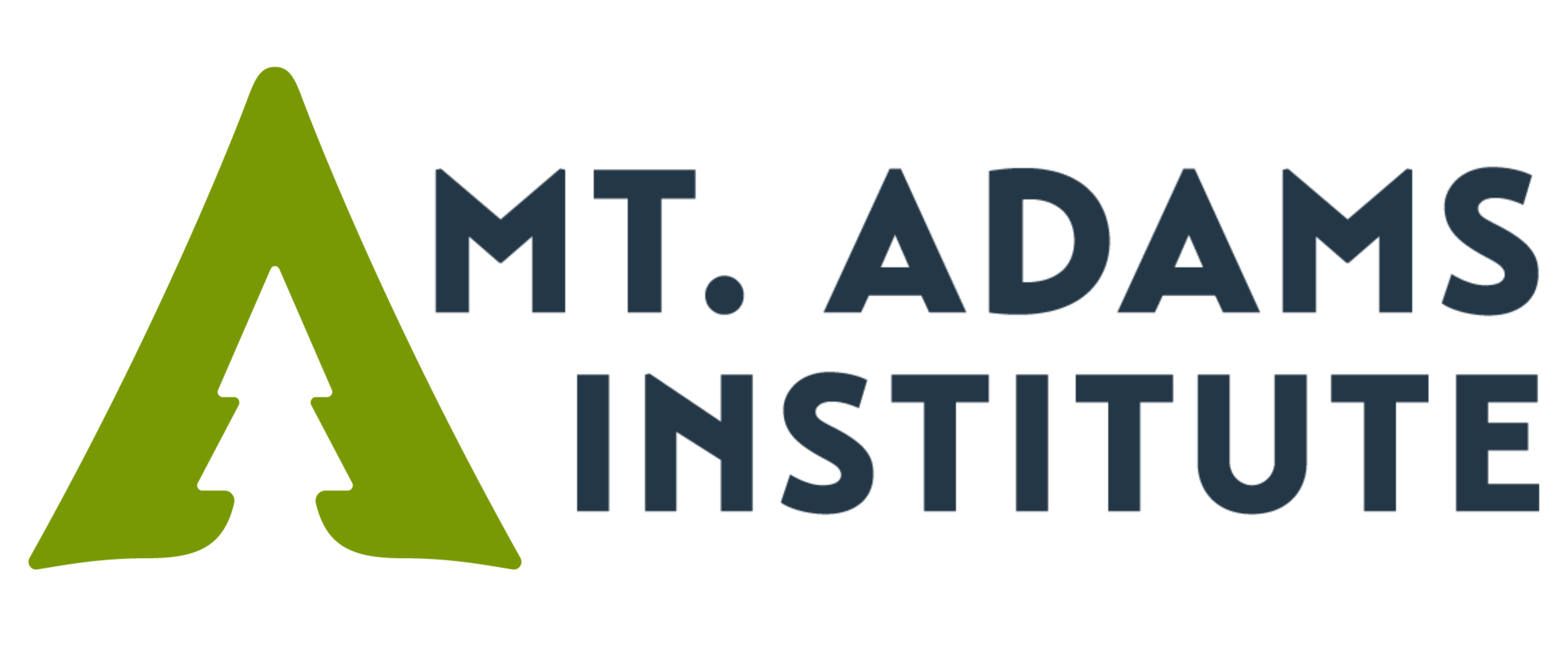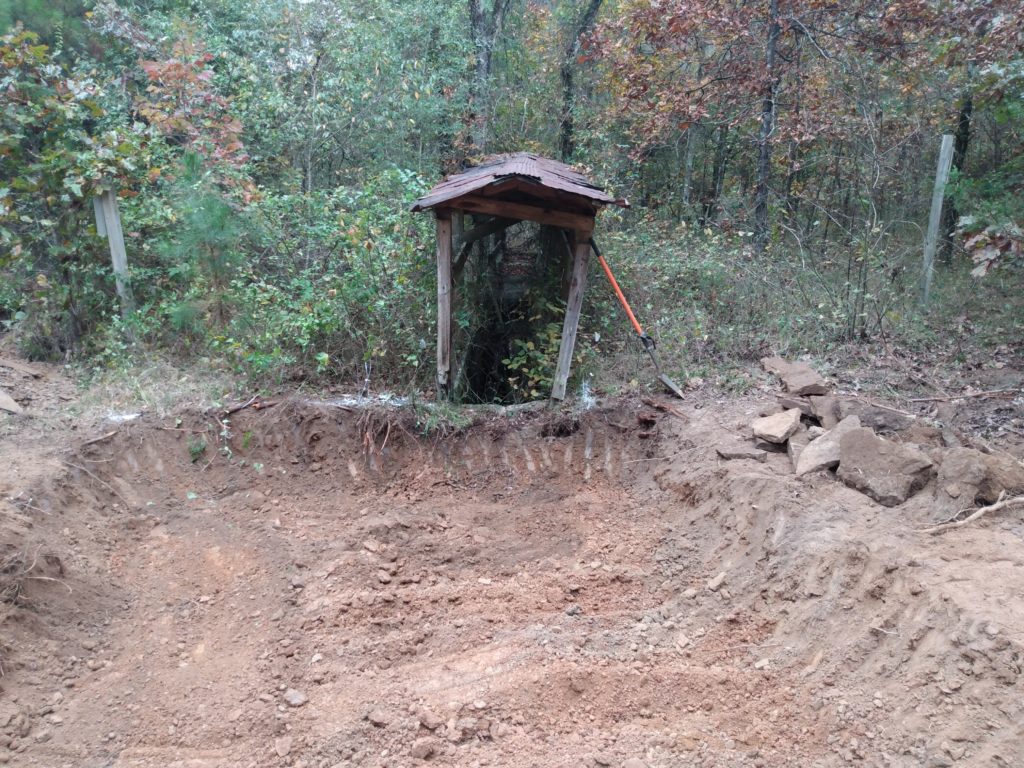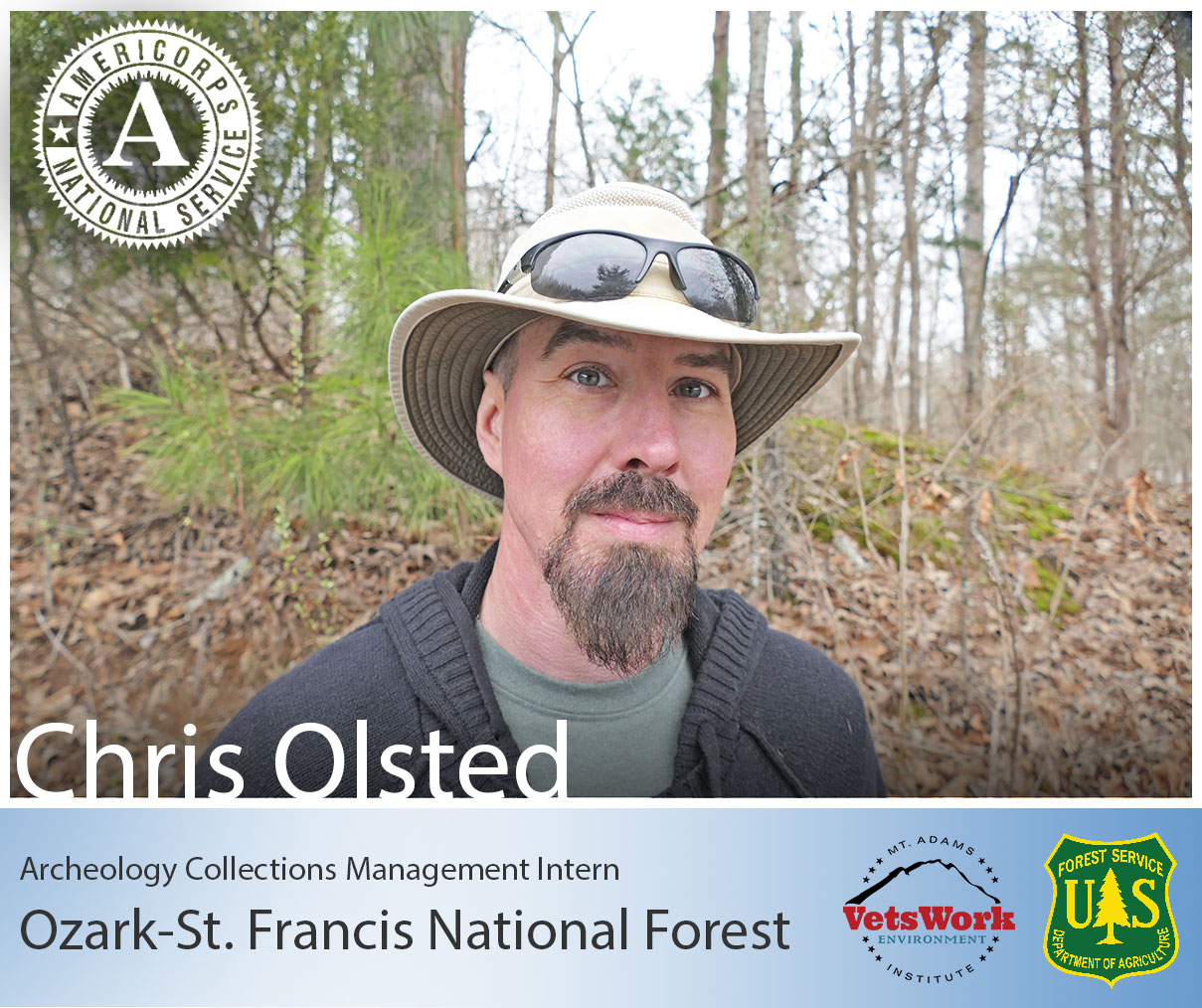In all jobs, routine is fundamental and unavoidable, though not necessarily a negative thing. One welcome routine from this position was the commute to Mountain View and Blanchard, a 100-mile scenic route from the river valley to the mountains.
On most days since tourist season ended, I basically have the route to myself, sharing it with loggers, rural mailmen, and a population of semi-homeless canine hobos simply referred to as ‘mountain dogs’ by the locals. Less traffic on that road is definitely a good thing, since this scenic route has numerous hairpin turns and blind switchbacks where crossing the centerline would ruin your whole day, at minimum. The newspaper that I spend a lot of time archiving at (the award-winning Stone County Leader) featured at least one severe or lethal collision or wreck every issue, so I took every possible defensive driving precaution on that route. The sheer level of animal carnage on that road was impressive, but I am happy to say that I haven’t killed anything with an actual backbone. In fact, I have initiated 38 turtle rescues, mostly three-toed box turtles (though I strongly suspect that I have rescued the same turtles more than once).
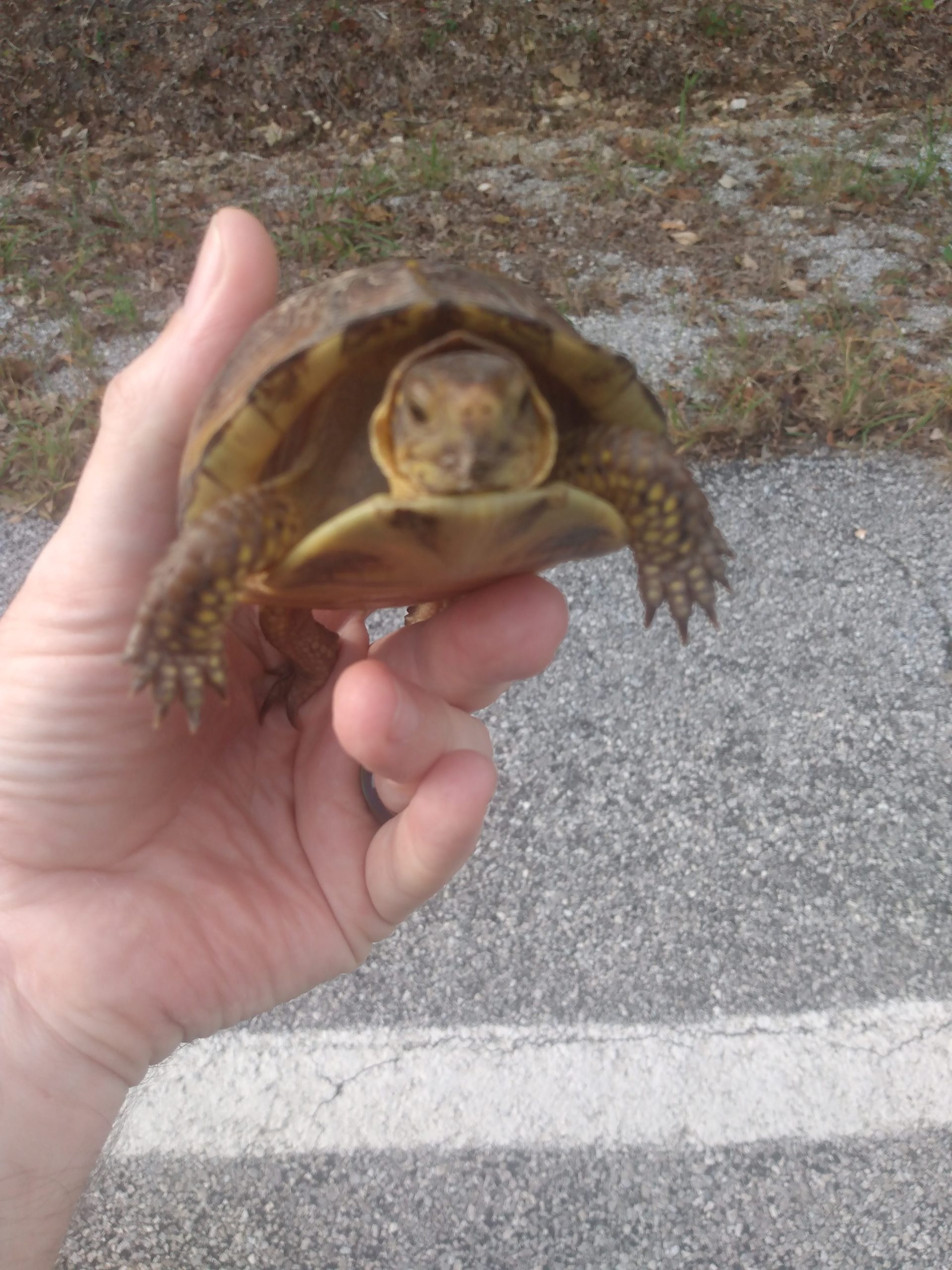 Forgive me a Naturalist moment regarding turtles and turtle rescue. Box turtles specifically are land-based turtles, and they are often seen crossing roads in search of mating or nesting sites. These turtles are distinctive for their high-domed shells and their hinged plastron (lower shell) that can close completely. Terrestrial turtles take their time on roadways that warm in the sun, and many will freeze up for hours if a vehicle passes nearby, even if they’re in the center of the road. If you see a turtle on the road that you wish to help, make certain that it’s safe to pull over and help the animal. Move the animal minimally to the side of the road where it was heading, as box turtles have small territories that they will always attempt to navigate back to if removed. Also, handling the animals places them at risk of viruses and bacteria, places the human at risk for zoonotic threats, and stresses the animal. Box turtles are unlikely to bite or attack, but it is best to scoop them up in a towel or old shirt. These animals may seem like mother nature’s ‘D’ student, but please bear in mind that they never had a chance to adapt to human traffic. If we take a moment on the roads to keep these gentle reptiles alive, they can keep going for over 100 years.
Forgive me a Naturalist moment regarding turtles and turtle rescue. Box turtles specifically are land-based turtles, and they are often seen crossing roads in search of mating or nesting sites. These turtles are distinctive for their high-domed shells and their hinged plastron (lower shell) that can close completely. Terrestrial turtles take their time on roadways that warm in the sun, and many will freeze up for hours if a vehicle passes nearby, even if they’re in the center of the road. If you see a turtle on the road that you wish to help, make certain that it’s safe to pull over and help the animal. Move the animal minimally to the side of the road where it was heading, as box turtles have small territories that they will always attempt to navigate back to if removed. Also, handling the animals places them at risk of viruses and bacteria, places the human at risk for zoonotic threats, and stresses the animal. Box turtles are unlikely to bite or attack, but it is best to scoop them up in a towel or old shirt. These animals may seem like mother nature’s ‘D’ student, but please bear in mind that they never had a chance to adapt to human traffic. If we take a moment on the roads to keep these gentle reptiles alive, they can keep going for over 100 years.
At the risk of sounding like a Travelogue, it seemed like the transition to fall colors happened entirely over the span on one week in early October. Elderly tourists from Canada were dotting the scenic overlooks, a few small festivals plodded onward in reduced capacity, and all of one Biden sign appeared on that 100-mile trek as summer wound down to fall. The cool weather was extremely welcome, as was the loss of leaf cover. Fall and winter are far better seasons to work archaeology in in this region, as the weather is usually cool and dry. Moving in the woods is easier, as the leaves fall and ground vegetation dies back. More hands-on archaeological work appeared as leadership changed, and the team is currently getting a lot of acreage monitored or sites protected prior to a timber sale.
There were several other interesting arch jobs, including a removal and replacement of several tons of polluted soil around a cattle dip pen.
By way of explanation, a cattle dip pen is a long concrete trough with a simple roof over it, filled with a bath of pesticides such as arsenic and Toxaphene. Cattle were led up to the pens and simply walked through, emerging from the other side to drip-dry as the chemicals did their work. These pens were built around the turn of the century in response to USDA legislation regarding the movement of cattle from the South to the North, where southern cattle were spreading Texas Fever to Northern stocks after being moved. As I’ve heard from an elderly local gentleman who actually ran mules through them decades ago, some animals would walk through these pens willingly, just to get relief from the ticks (and I can fully sympathize with them).
Another aspect of the internship is the Community Action Project (CAP), which is a fairly free-form undertaking. My CAP was an experiment in environmental science, seeking to prove the potential of an experimental soil additive derived from plastic that has been digested by a specific insect (Tenebrio molitor, aka the darkling beetle). I relied heavily on the local 4-H youth, who participated in the first two phases of the experiment. The students seemed to very much enjoy participating, and there was a great period of back and forth where the kids were coming up with some incredible questions and observations. Understandably, a lot went wrong, as some of these kids were 10 or under. The kids and our wonderful 4-H rep seemed to get a lot out of the project, and I take it as a mark of pride that they seemed to understand what scientific bias was, and why we seek to avoid bias in science through blind experiments and other means. I’m thrilled that the kids got so much out of it, since it’s been driving me insane for weeks. My final measurements are showing no clear trends to suggest that my experimental treatment is making any difference whatsoever, so I’m trying to interpret my results in a way that isn’t just another ‘inconclusive’. I’ve got the kids excited now, so I don’t want to dampen any enthusiasm they may have for STEM science!
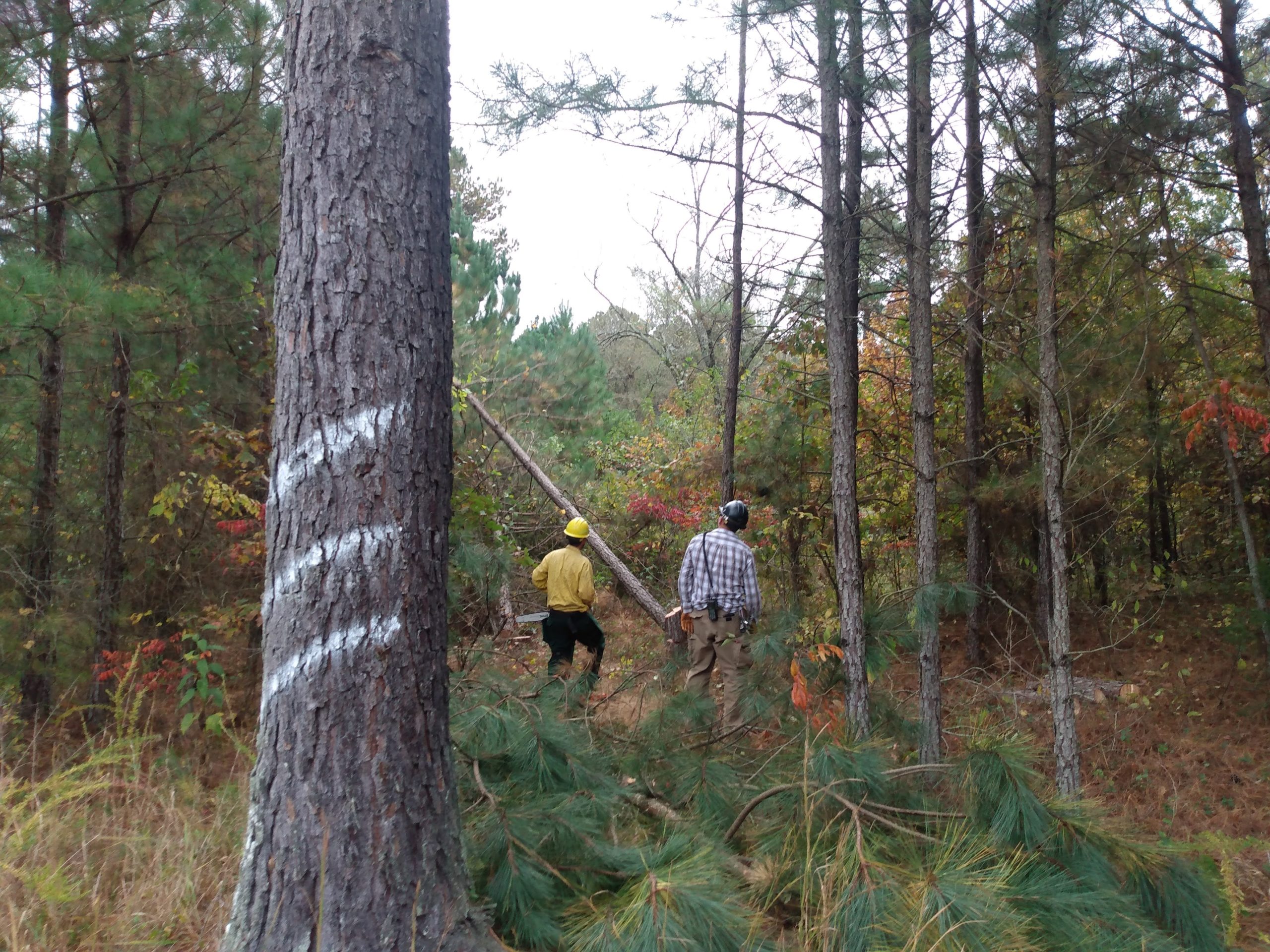 From the date of writing, the end of the internship is indeed in sight. A good amount of time is spent working on resumes, cover letters, and interviews, and I am certain that my own resume is looking considerably fresher. Though I am attempting to take another internship through Vetswork, I am also applying to a great number of archaeological positions within the Forest Service, as well as biology, ecology, and recreation positions, to get onboard within the agency as soon as possible. Even better, I’m armed with several new references within the agency, and I feel that my work ethic and generally amiable nature has won me a few reliable contacts that could follow me forward through my career. I was surprised at how natural a fit the Forest Service has been for me; it feels a little bit like the military, and a little bit like the Parks Service. I find myself enjoying the agency culture, and every task I’ve undertaken was perfectly in line with my ethics as a Naturalist. All things considered, despite Covid, the shutdowns, telework, and the endless Kafkaesque national crises that have made 2020 so interesting, I feel that I’ve made considerable and invaluable personal progress during the internship. I’d like to give a huge thanks to my amazing support team at Mt. Adams Institute, and my co-workers within the Forest Service.
From the date of writing, the end of the internship is indeed in sight. A good amount of time is spent working on resumes, cover letters, and interviews, and I am certain that my own resume is looking considerably fresher. Though I am attempting to take another internship through Vetswork, I am also applying to a great number of archaeological positions within the Forest Service, as well as biology, ecology, and recreation positions, to get onboard within the agency as soon as possible. Even better, I’m armed with several new references within the agency, and I feel that my work ethic and generally amiable nature has won me a few reliable contacts that could follow me forward through my career. I was surprised at how natural a fit the Forest Service has been for me; it feels a little bit like the military, and a little bit like the Parks Service. I find myself enjoying the agency culture, and every task I’ve undertaken was perfectly in line with my ethics as a Naturalist. All things considered, despite Covid, the shutdowns, telework, and the endless Kafkaesque national crises that have made 2020 so interesting, I feel that I’ve made considerable and invaluable personal progress during the internship. I’d like to give a huge thanks to my amazing support team at Mt. Adams Institute, and my co-workers within the Forest Service.
Written by:
